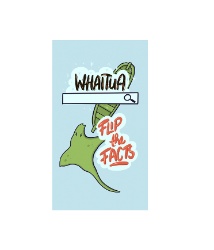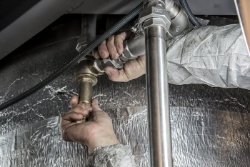Revolutionising Predator Control: A New Wave Of Tech Tools Accelerating New Zealand’s Predator Free Mission
Aotearoa New Zealand’s fight for a predator free future has taken a bold leap forward, with a powerful suite of next-generation tools and technologies already starting to transform pest management across the motu.
Developed through Predator Free 2050 Limited (PF2050 Limited) Products to Projects (P2P) funding of innovation since 2019, 20 cutting-edge tools are becoming operational with more on the way. These tools range from AI-driven detection systems and remote monitoring networks to smarter traps and more targeted toxin use.
Over $8 million in revenue sales to developers has been accomplished to date, with further commitments to purchase from interested parties later this year. A number of these tools are also gaining international attention with sales as far afield as Guam, Scotland, USA and the UK. Not only is this good news for the developers, it’s also further growing New Zealand’s reputation as global leaders in pest management for conservation.
"These tools are game-changers," says PF2050 Limited Research and Development Project Support Manager Olivia Rothwell. "For example, the ‘Backcountry Camera’, a remote-reporting thermal camera with onboard AI image recognition, is enabling the maintenance of tens of thousands of hectares of predator free space in Predator Free South Westland."
‘’This is no longer just about one device. It's an ecosystem of tools-powered by cutting-edge technology, informed by our in-depth knowledge of possums, rats and mustelids, and brought together through local innovation to protect our native species," Rothwell says.
The Toolbox
Better Luring
- PoaUku- Developed by Boffa Miskell, these long-life ceramic-based lures can stay attractive in the field for up to three months and be refilled when they run out. Two versions are available - one for mustelids (stoats, ferrets and weasels) and one for possums and rats.
- EzyLure- Developed by Boffa Miskell, this is a set-and-forget device that automatically dispenses fresh lure at pre-determined intervals. It can be retrofitted to a wide range of existing traps and bait stations and paired with trail cameras for effective monitoring.
- Motolure- Developed by Zero Invasive Predators, Motolure dispenses a preset amount of fresh lure for up to one year without requiring manual service. It can be used as a lure for traps, a prefeeding tool, a detection device, and a biomarker tool to monitor predator movements.
Remote Monitoring
- BaitSense- Developed by eTrapper, Baitsense provides a near real-time view of levels in mini Philproof Gen III baitstations. Data is remote-reported and displayed on the Trap.NZ web platform, making it free for the user to be notified if bait is being taken or if a refill is required.
- Backcountry Camera- Developed by Zero Invasive Predators, is a remote-reporting thermal video camera with onboard AI image recognition that supports landscape-scale predator surveillance across tens of thousands of hectares in Predator Free South Westland.
- Smart Camera Monitoring System- Developed by Critter Solutions, this trail-camera with onboard AI image recognition and thermal triggering offers improved detection and species recognition. The camera can also send alerts of images taken of target species in real-time.
Remote Communication
- OutPost- Developed by Zero Invasive Predators, this is a remote communication system for traps and detection cameras. Outpost can be paired with a range of devices and utilises LoRaWan to send data out of remote landscapes where there is no cell connectivity.
- Flexicomms- Developed by Critter Solutions, Flexicomms is a remote communication platform (web-based front and back end) developed for trap and detection device integration. Currently a cell-based version, it will also utilise OneNZ direct-to-satellite IoT technology.
- Connected Leg-Hold Traps- Developed by Encounter Solutions, this system enables real-time notification from, and monitoring of, leg-hold traps over even challenging topographies (utilising the Celium network, a dynamic low-power long-range communication system).
- Live Capture Remote Locking- Developed by Encounter Solutions, also utilising the Celium network, this system allows users to remotely lock live capture cage-traps, ensuring that animal welfare is maintained when staff are unable to physically disable live capture traps.
Supporting Software
- CamTrap- Developed by Manaaki Whenua Landcare Research, this free to use AI image recognition software can identify 11 species and supports the rapid assessment for predator detection of images that standard motion-triggered cameras (‘trail cameras’) produce.
- Open Sensor Network- Developed by Trap.NZ and using LoRaWAN (a low power long range wide area network protocol), this enables ‘off-the-shelf’ hardware to send trap-trigger alerts and data directly to the Trap.NZ platform (a free predator control data management app).
- Deployment & Planning Module- Developed by Trap.NZ, these new functions enable Trap.NZ users to better plan predator trapping deployment within the Trap.NZ web app. Recording functions also help users to keep track of landowner permissions and device installations.
Self-resetting Traps
- AT220- Developed by NZ AutoTraps, the AT220 is New Zealand’s first multi-species, automatic resetting and re-luring predator trap, controlling both possums and rats for predator free. It has been shown to quickly and effectively control pest populations with minimal labour costs.
- Multi-species AI Kill Trap- Developed by Critter Solutions, this trap with AI species recognition targets mice, rats, mustelids and possums with the highest animal-welfare rating. With open architecture, it can target shy pests while protecting native wildlife.
High-interaction Rate Traps
- High Interaction Rate Trap- Developed by The Cacophony Project, this earlier version of the High Interaction Rate Trap is an open-architecture motion-sensing multi-species cage trap, ideal for targeting remaining hard to control predator individuals, or those re-invading.
- Intelligent High Interaction Rate Trap- The Cacophony Project further developed their trap to include a PIR (passive infrared red) sensor and an automated reset mechanism, further improving its sensitivity for capturing predators and allowing it to be deployed for longer.
- PosStop- Developed by Zero Invasive Predators, this is an improved raised set for the leg-hold trapping of possums, still one of the best approaches that we have for helping to eliminate remaining possum individuals following their knock-down control in backcountry landscapes.
Selective Toxin Application
- Wildlife Friendly Bait Station- Developed by Zero Invasive Predators, this bait station effectively delivers toxic bait to predators over long periods while ensuring that non-targets cannot access the bait (with a focus on being safe for kea in backcountry landscapes).
- Possum Spitfire- Developed by Envico Technologies, the Spitfire is a self-resetting, species-specific toxin delivery device, that uses a sensor array to accurately spray liquid toxin onto the stomach of only possums (and no other species), which is then ingested during grooming.


 Commerce Commission: ComCom Finds No Evidence Of Cartel Behaviour In Banks’ Involvement In Net-Zero Banking Alliance
Commerce Commission: ComCom Finds No Evidence Of Cartel Behaviour In Banks’ Involvement In Net-Zero Banking Alliance Hāpai te Hauora: Pātea - A World-First Māori Gambling Harm Digital Platform Launches Across Aotearoa
Hāpai te Hauora: Pātea - A World-First Māori Gambling Harm Digital Platform Launches Across Aotearoa Āti Awa Toa Hauora Iwi Māori Partnership Board: New Whaitua Mapping Tool And Monitoring Our Oranga Framework Places Health Information In Whānau Hands
Āti Awa Toa Hauora Iwi Māori Partnership Board: New Whaitua Mapping Tool And Monitoring Our Oranga Framework Places Health Information In Whānau Hands Hugh Grant: How You Know You Need To Get Your Business's Plumbing Checked
Hugh Grant: How You Know You Need To Get Your Business's Plumbing Checked Bill Bennett: Download Weekly—Winter, game updates see UFB traffic surge
Bill Bennett: Download Weekly—Winter, game updates see UFB traffic surge Science Media Centre: Is Gene Editing The Next Frontier Of Conservation? – Expert Reaction
Science Media Centre: Is Gene Editing The Next Frontier Of Conservation? – Expert Reaction


